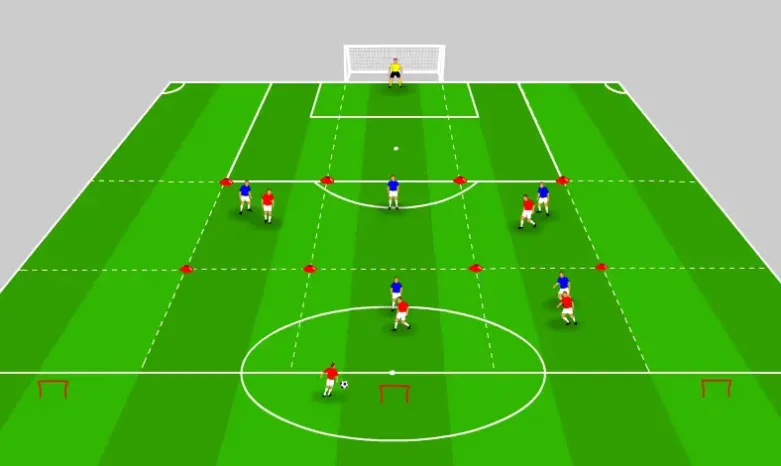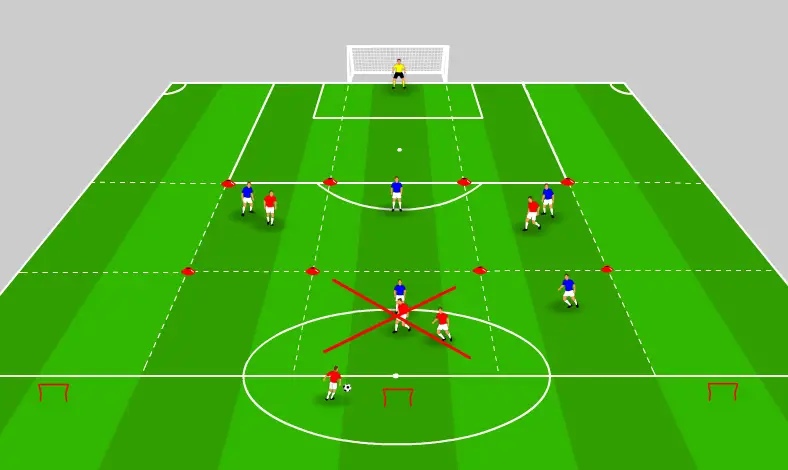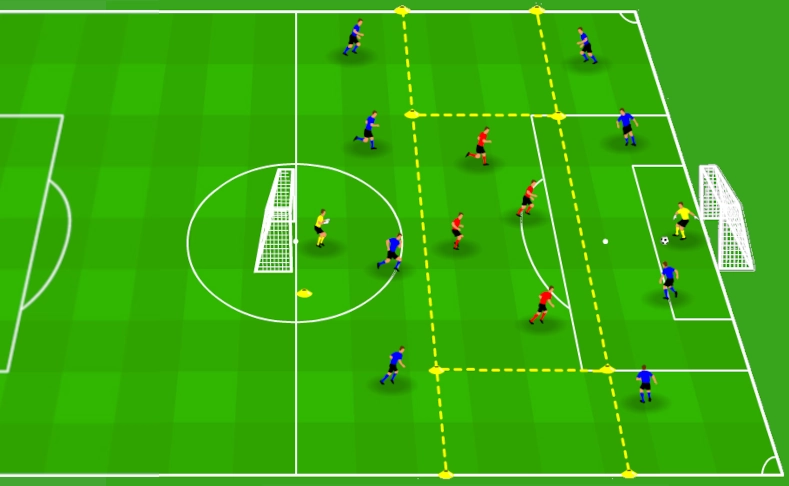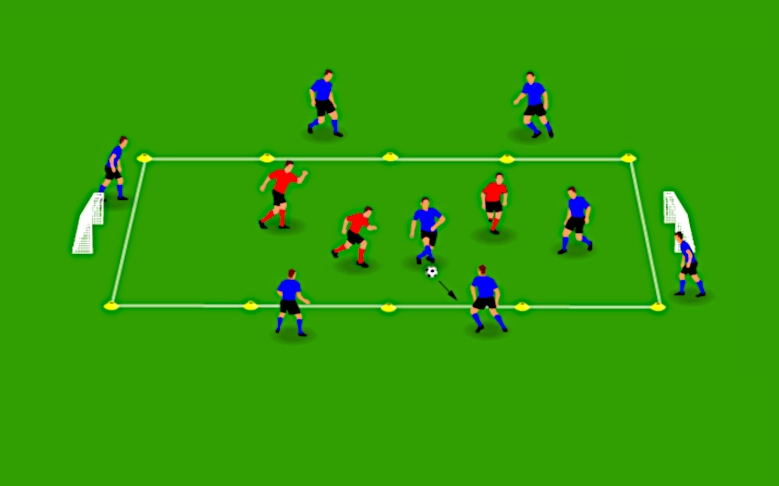Keeping team shape - Training with a grid

A common issue in amateur football is keeping team shape during games. This post discusses a drill that assists you in coaching team shape by making players understand where to position themselves in real game scenarios.
The problem
When you start a team in an amateur competition (Sunday league in some countries), you enrol players with all backgrounds and football experience to make numbers. However, it is common to have a few players with good individual skills who never played organised 11 aside football. Therefore, players move all over the park during a game, overcrowding zones, leaving dangerous gaps or missing opportunities provided by empty spaces.
You only need one or two players that don’t know how to position themselves on the field to unbalance your team. While many factors influence the outcome of a game, teams with quality players but poor shape are often beaten by well-organised teams with average players.
The drill in this post will assist you in coaching team shape by helping players understand the field as a grid. The primary purpose of this exercise is to avoid multiple teammates rushing to where the ball is, regardless if you are defending or attacking.
Setup
This drill closely resembles real game situations. Therefore, you must practice it on one-half of an actual 11 aside football field. You will need 8 cones and 3 small goals (or 6 cones). Position the 3 goals in the middle line, one in each wing and one right in the centre of the field. The picture below illustrates the setup.
Ideally, you want to practice with 10 players and a goalkeeper. Divide the players in defence and attack. If your squad is over 20 players strong and has access to a full field, you can split the players into two groups practising the same drill in each half of the pitch. It doesn’t matter if you have an odd number of players. You can play more attackers than defenders or vice versa.
Instructions
This exercise is an attack vs defence game. The drill’s main objective is for both teams to keep their shape. The exercise also encourages possession football. The basic rules of the game are:
- 2 teams: defence vs attack. Preferably 5 players each.
- 1 goalkeeper.
- Only 3 touches are allowed (e.g., 1 touch to control the ball, 1 touch to change direction and 1 touch to pass the ball).
- A maximum of 2 players is allowed in each zone: 1 defender and 1 attacker.
- Players possessing the ball can only pass it to a teammate in a contiguous zone.
- Defending players can only clear the ball beyond a contiguous zone if the ball is in the penalty box.
- When the defensive team recovers the ball, their objective is to score in the small goals.
You can add variations to the rules, but remember that the objective is for players to learn how to position in the field and maintain shape. So, for example, you could allow long crosses but only in the last row of the grid.
 2 defenders in a zone are not allowed
2 defenders in a zone are not allowed
 2 attackers in a zone are not allowed
2 attackers in a zone are not allowed
Takeaways
This football attacking drill focuses on working as a team. It is a great drill that involves every player in your team and keeps everyone moving. These are some concepts that this exercise helps to develop:
- Players positioning. This drill is designed to allow you to practice your preferred formation. With enough practice, players get used to their positions and master how to occupy empty spaces.
- Playing as a team. Although individual skills play a part in the game, limiting the number of touches forces everyone to play as a team.
- Passing. Since limited touches are allowed, players must circulate the ball around and improve their passing technique.
- Transitioning from defence to attack. The defensive team’s objective is to score goals too but differently. Therefore is not enough to intercept the ball and kick it high and out. Instead, the defensive team must pass the ball around to score in the small goals in the middle of the field.
- Finishing. This drill is played with a goalkeeper. Therefore your offensive players are faced with real finishing scenarios.
You can take the grid concept further as your team gets more comfortable with the idea and the football style you want to play. For example, the video below showcases how Pep Guardiola uses a grid system to play the game compared to other coaches.
I hope you find this drill useful. You can see more exercises like this in our drills section. Also, if you know other techniques for coaching team shape, please comment on our Facebook page.



